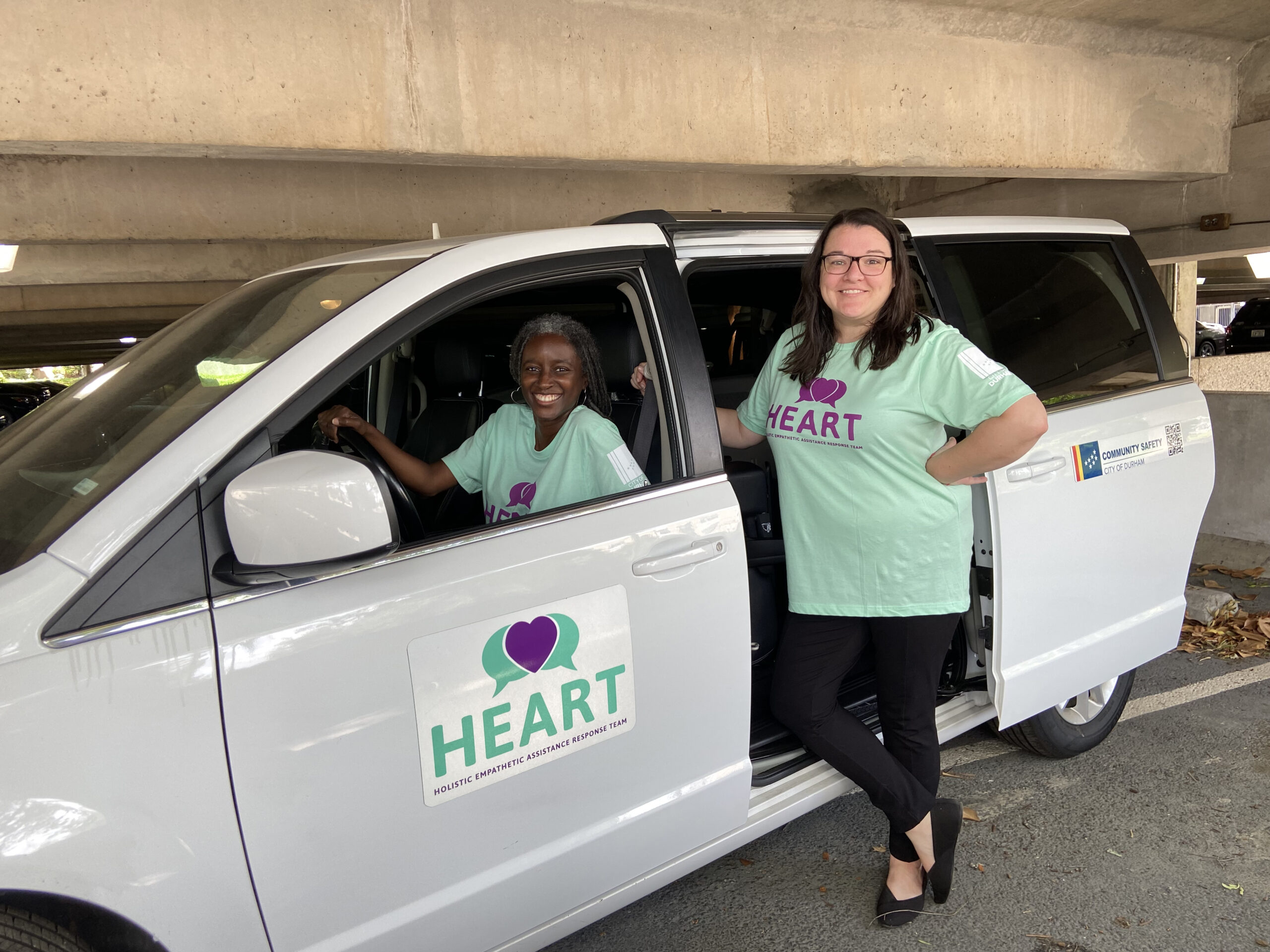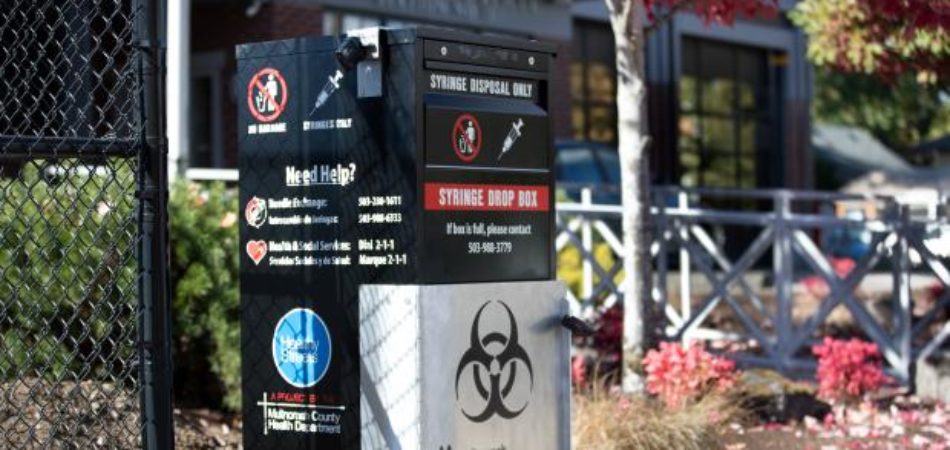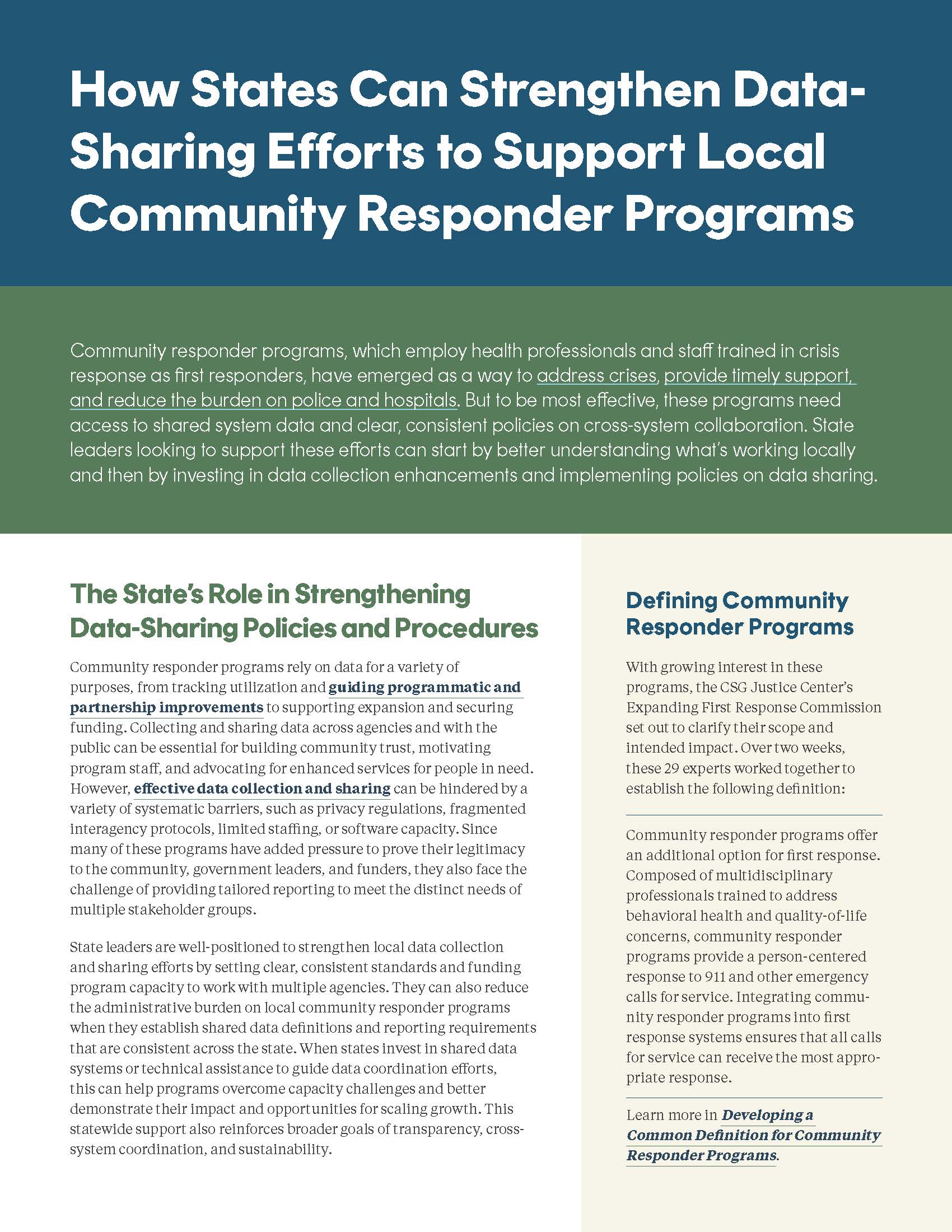How States Can Strengthen Data-Sharing Efforts to Support Local Community Responder Programs
Community responder programs are growing across the country as an effective mechanism for reducing client distress, providing timely support, and reducing the burden on police and hospitals. But to be most effective, these programs need access to shared system data and clear, consistent policies on cross-system collaboration. State leaders looking to support these efforts can start by better understanding what’s working locally and then by investing in data collection enhancements and implementing policies on data sharing.
How States Can Strengthen Data-Sharing Efforts to Support Local Community Responder Programs

Photo Credit: Durham Community Safety Department
Community responder programs, which employ health professionals and staff trained in crisis response as first responders, are growing across the country as an effective mechanism for reducing client distress, providing timely support, and reducing the burden on police and hospitals. But their ability to assist a person in crisis often begins with how integrated they are within local dispatch operations. Now, examples and strategies are emerging that can help state leaders support, fund, and scale up what is working.
Community responder programs rely on data for a variety of purposes, from tracking utilization and guiding programmatic and partnership improvements to supporting expansion and securing funding. Collecting and sharing data across agencies and with the public can be essential for building community trust, motivating program staff, and advocating for enhanced services for people in need. However, effective data collection and sharing can be hindered by a variety of systematic barriers, such as privacy regulations, fragmented interagency protocols, limited staffing, or software capacity. Since many of these programs have added pressure to prove their legitimacy to the community, government leaders, and funders, they also face the challenge of providing tailored reporting to meet the distinct needs of multiple stakeholder groups.
“Coordination among cross-system partners is crucial for collecting data and showing the success of a program,” said Annie Burwell, program manager for the Crisis Response Unit of the Round Rock (TX) Fire Department and member of the Expanding First Response Commission. “Stakeholders often want to know how effective a first response program is, but it is hard to get data on what you’ve prevented (e.g., crimes, hospitalizations, arrests) without access to shared data throughout the justice and health systems.”
State leaders are well-positioned to strengthen local data collection and sharing efforts by setting clear, consistent standards and funding program capacity to work with multiple agencies. They can also reduce the administrative burden on local community responder programs when they establish shared data definitions and reporting requirements that are consistent across the state. When states invest in shared data systems or technical assistance to guide data coordination efforts, this can help programs overcome capacity challenges and better demonstrate their impact and opportunities for scaling growth. This statewide support also reinforces broader goals of transparency, cross-system coordination, and sustainability.
Defining Community Responder Programs
With growing interest in these programs, the CSG Justice Center’s Expanding First Response Commission set out to clarify their scope and intended impact. Over two weeks, these 29 experts worked together to establish the following definition:
Community responder programs offer an additional option for first response. Composed of multidisciplinary professionals trained to address behavioral health and quality-of-life concerns, community responder programs provide a person-centered response to 911 and other emergency calls for service. Integrating community responder programs into first response systems ensures that all calls for service can receive the most appropriate response.
Learn more in Developing a Common Definition for Community Responder Programs.
3 Things State Leaders Can Do to Make Data Sharing Easier for Community Responder Programs
The Expanding First Response Commission—which includes advocates, first responders, policymakers, researchers, state and municipal officials, and people with other personal and professional experiences—met between January and March 2025 to develop actionable guidance for state leaders interested in supporting local community responder efforts. Below are three of their recommendations:
1. Create standard data metric definitions and streamline data collection requirements.
One way to enable better data sharing is by establishing a set of shared metrics and definitions that community responder programs can use throughout the state. When done in collaboration with local stakeholders, this process can improve transparency and ensure that the metrics align with community goals. State leaders should also be mindful about placing undue burdens on frontline teams. Establishing a single reporting template that captures essential state compliance and program evaluation metrics may reduce duplication, allow for comparison across programs, and enhance overall data quality.
2. Fund the infrastructure and partnerships needed for effective data collection and evaluation.
Investing in high-quality data-sharing software and evaluations can be a barrier for emerging programs and those with limited funding. State leaders can offer
dedicated grants that fund software systems and secure data platforms or fund program staff roles such as data analysts or IT support. For long-term capacity, they can set up a statewide Center of Excellence that provides training, technical assistance, and ongoing consultation. States can also incentivize partnerships with local universities and research institutions to help programs with limited resources analyze and interpret their data.
3. Reduce data-sharing barriers and set standards for cross-agency collaboration.
State-level guidance can help break down silos and establish requirements for agencies (such as public health, law enforcement, and behavioral health) to securely share relevant data with community responder programs. By issuing clear mandates around data sharing responsibilities, state leaders can reduce duplication in who is collecting data and create pathways for sharing information across systems that still adhere to state and federal privacy protection laws. This will not only help improve interagency data access, but it can also help programs build more coordinated, efficient, and people-centered responses to crises.
Read more recommendations from the Expanding First Response Commission.
State Example of These Strategies in Action
With growing concerns of the nation’s opioid epidemic, Ohio state officials launched the RecoveryOhio Early Warning Dashboard—a predictive data tool that helps health departments, health care facilities, emergency medical services, and law enforcement proactively monitor and address overdose risks statewide. The public dashboard features up-to-date data from sources such as emergency medical reports, naloxone administration, socioeconomic indicators, and law enforcement encounters. It is part of the DataOhio Portal, which displays public datasets that state and local leaders, policymakers, and community members can review to gather data insights into the state’s most complex problems.
With the Early Warning Dashboard, state health departments now have the information they need to make data-informed decisions when allocating resources, such as naloxone and fentanyl testing strips, to first responders (including community responder programs like the Mediation Response Unit in Dayton) in the most impacted communities. The information within can also help local programs connect people with recovery supports to reduce their likelihood of justice involvement.
Project Credits
Writing: Felicia Lopez Wright, CSG Justice Center
Research: Mari Bayer, Michelle Fernando, and Felicia Lopez Wright, CSG Justice Center
Advising: Hallie Fader-Towe and Anne Larsen, CSG Justice Center
Editing: Darby Baham, CSG Justice Center
Design: Theresa Carroll, CSG
Web Development: Caroline Cournoyer, CSG Justice Center
Public Affairs: Sarah Kelley, CSG Justice Center











